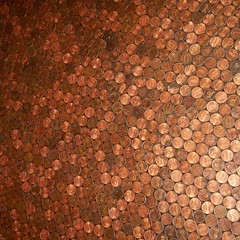It would be so very easy to say those words. When our finances crumble a little or crash completely, just say “I quit”! Two simple little words. But, they have a whole set of repercussions.
I can’t count the number of times in the last several years, when the weight and toil of digging ourselves out of this well of debt that we dropped ourselves into, where I wouldn’t have liked to have just said “I quit.” But I haven’t yet.
Part of the reason why I haven’t is the social stigma that is associated with the result of saying “I quit”. Bankruptcy. Granted, the social stigma has decreased a lot in the last couple of years, but it’s still there. Another thing that keeps me from quitting is the challenge of getting out of the mess on my own. I like the challenge. The side effect with that, is that what happens when the I begin winning that challenge? A new challenge arises and I lose ground on the last challenge.
Which is why it would be so much easier to say “I quit.”
I find it difficult to remain focused. And, admittedly, I’ve lost the focus a time or two. Not only in finances but in other things as well. But, if you lose your focus, you’ve got to gain it back. And hopefully, it won’t come back because the loss of focus cost you something, but merely because you felt it go.
Stick with it!

 In today’s economy, with today’s prices, coins have become nearly worthless. We all know that the penny costs more to manufacture than it is “worth”. When was the last time you paid for anything with a few pennies? Or with a few nickels? Heck, even paying for anything with a few quarters is becoming a bit harder to do.
In today’s economy, with today’s prices, coins have become nearly worthless. We all know that the penny costs more to manufacture than it is “worth”. When was the last time you paid for anything with a few pennies? Or with a few nickels? Heck, even paying for anything with a few quarters is becoming a bit harder to do.